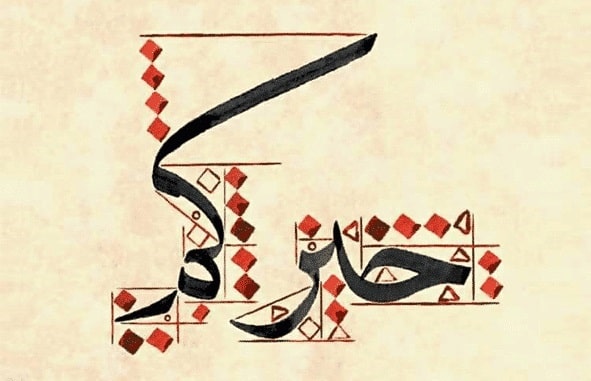Arabic calligraphy, an ancient and mesmerizing art form, has played a significant role in the cultural and artistic heritage of the Arab world for over a thousand years. Its history is a testament to the enduring power of the Arabic script, which has evolved into a diverse and expressive form of art.
Embark on a journey through the rich history of Arabic calligraphy, exploring its origins, development, and contemporary relevance in a globalized world.
The Origins of Arabic Calligraphy
The roots of Arabic calligraphy can be traced back to the early days of Islam in the 7th century. As the Islamic faith spread rapidly across the Arabian Peninsula and beyond, there arose a need to transcribe and preserve the Quran, the holy book of Islam, in a manner that honoured its sacred content. Thus, Arabic calligraphy was born out of the desire to convey the divine message with the utmost beauty and reverence.
Early Arabic calligraphers sought to harmonize the script’s functionality with artistic expression. The Kufic script, one of the earliest styles, exemplified a geometric and rigid aesthetic, while the Naskh script, which emerged later, offered greater legibility and fluidity. Over time, various other scripts such as Thuluth, Diwani, and Nastaliq developed, each with its unique characteristics and regional variations.
Development and Flourishing
Arabic calligraphy flourished during the Islamic Golden Age (8th to 13th centuries) when scholars and artists devoted themselves to perfecting this art form. Calligraphers like Ibn Muqla and Ibn al-Bawwab pioneered new techniques, refined existing styles, and developed rules and guidelines that are still followed by contemporary calligraphers.
The Ottoman Empire made significant contributions to the evolution of Arabic calligraphy. Ottoman calligraphers developed the Diwani and Ta’liq scripts, known for their intricate curves and flourishing compositions. Sultans and rulers patronized calligraphers, commissioning them to create masterpieces that adorned mosques, palaces, and manuscripts.
Arabic Calligraphy in the Modern World
In today’s globalized world, Arabic calligraphy has transcended its historical and cultural boundaries to become a universal art form. Its aesthetic appeal and profound cultural significance have garnered international recognition and appreciation. Here are some modern-day applications of Arabic calligraphy:
1. Islamic Art and Decor:
Arabic calligraphy is a prominent feature of Islamic art. And architecture, adorning mosques, palaces, and monuments worldwide. It continues to inspire contemporary architects and designers in creating modern Islamic spaces.
2. Typography and Graphic Design:
Arabic calligraphy has influenced typography and graphic design, with many designers incorporating Arabic script into logos, advertisements. And packaging for a touch of elegance and cultural authenticity.
3. Fine Art and Galleries:
Arabic calligraphy is celebrated in fine art, with calligraphic works displayed in prestigious galleries and museums. Renowned contemporary calligraphers like Hassan Massoudy and Ahmed Moustafa have gained international acclaim for their innovative approaches.
4. Literature and Publications:
Arabic calligraphy remains an integral part of traditional book design, particularly in Quran manuscripts and religious publications. It serves as a bridge between ancient wisdom and modern readers.
5. Tattoos and Personal Expression:
Arabic calligraphy has gained popularity in the world of body art, with people getting meaningful Arabic phrases. And poetic verses as tattoos to express their cultural heritage or spirituality.
6. Digital Media and Technology:
Arabic fonts and calligraphy are essential in digital media, software. And user interfaces for Arabic-speaking users, contributing to a more inclusive and user-friendly experience.
Arabic calligraphy, with its long and illustrious history, has left an indelible mark on the cultural. And artistic landscape of the Arab world and beyond. Its evolution from a functional script to a revered art form showcases the enduring appeal of the Arabic script’s aesthetic beauty and spiritual significance.
In today’s interconnected world, Arabic calligraphy continues to thrive, bridging the gap between tradition and modernity. And serving as a testament to the enduring legacy of this eloquent artistry.
